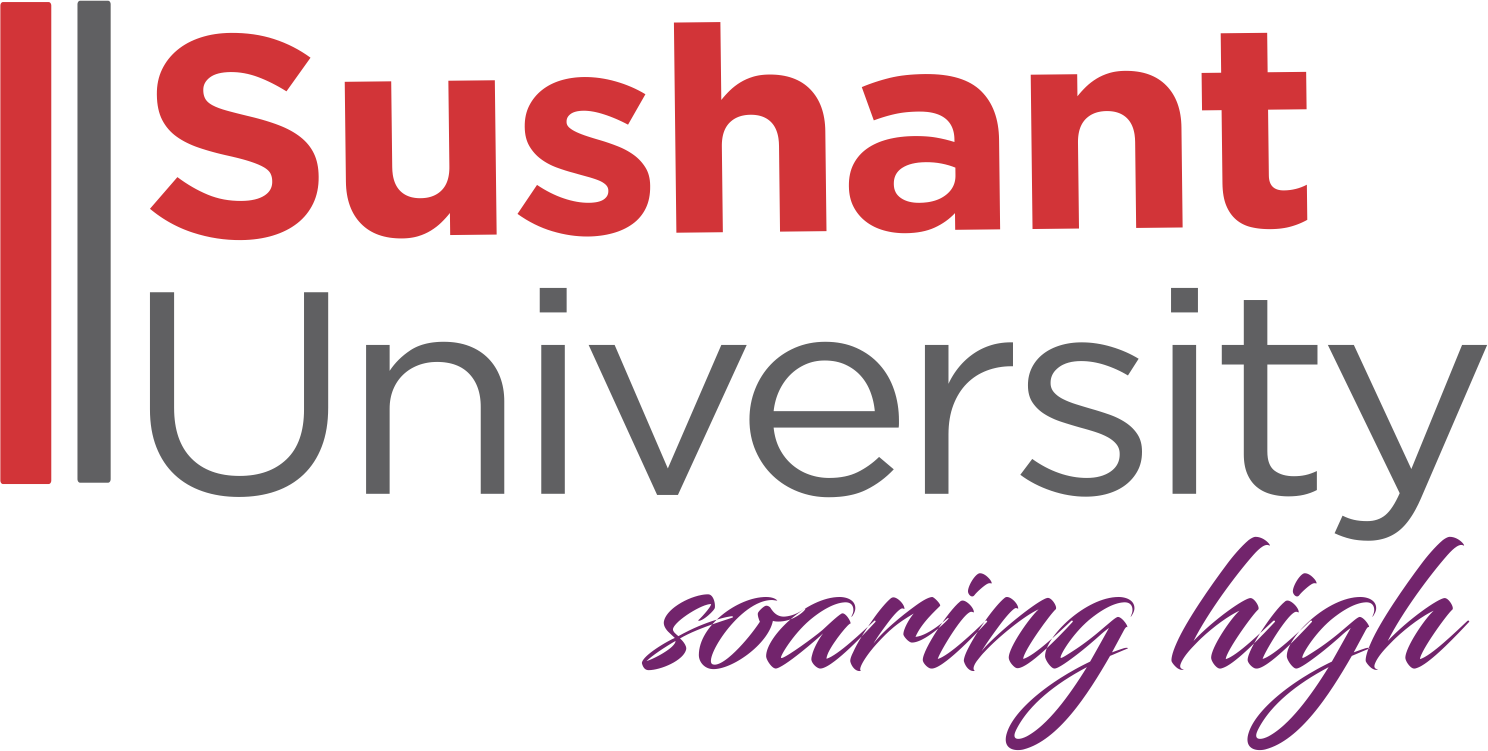Fundamentals of Programming
=====
|
School of Engineering & Technology
Course Outline
|
|
Course Title: Fundamentals of Programming
Course Code: CA101
|
|
Semester: I
|
Academic Year: 2023
|
Core/Elective: Core
|
L-T-P- 3-0-2
Credit: 4
|
|
Course Designed by: Dr. Alpana Jijja
E-mail: alpanajijja@sushantuniversity.edu.in
|
Course Instructor: Dr. Alpana Jijja
E-mail: alpanajijja@sushantuniversity.edu.in
|
|
Pre-requisites: None
|
1. Course Outcomes:
Upon successful completion of the course, the students should be able to:
CO1: To learn programming in core Python
CO2: To develop programs in Python using lists, tuples and strings
CO3: To Understand and implement the logic of the core concepts.
CO4: Prepare programs implementing file and function in Python
CO5: Create advanced programming features in Python to solve industry standard problems.
2. Program Outcomes:
This section deals with how well this course meets the following eight overall program outcomes (POs):
PO1: Engineering knowledge: Apply the knowledge of mathematics, science, engineering fundamentals, and engineering. Specialization to the solution of complex engineering problems.
PO2. Problem analysis: Identify, formulate, research literature, and analyze engineering problems to arrive at substantiated conclusions using first principles of mathematics, natural, and engineering sciences.
PO3. Design/development of solutions: Design solutions for complex engineering problems and design system components, processes to meet the specifications with consideration for the public health and safety, and the cultural, societal, and environmental considerations.
PO4. Conduct investigations of complex problems: Use research-based knowledge including design of experiments, analysis and interpretation of data, and synthesis of the information to provide valid conclusions.
PO5. Modern tool usage: Create, select, and apply appropriate techniques, resources, and modern engineering and modeling to complex engineering activities with an understanding of the limitations.
PO6. The engineer and society: Apply reasoning informed by the contextual knowledge to assess societal, health, safety, legal, and cultural issues and the consequent responsibilities relevant to the professional engineering practice.
PO7. Environment and sustainability: Understand the impact of the professional engineering solutions in societal and environmental contexts, and demonstrate the knowledge of, and need for sustainable development.
PO8. Ethics: Apply ethical principles and commit to professional ethics and responsibilities and norms of the engineering practice.
PO9. Individual and team work: Function effectively as an individual, and as a member or leader in teams, and in multidisciplinary settings.
PO10. Communication: Communicate effectively with the engineering community and with society at large. Be able to comprehend and write effective reports documentation. Make effective presentations, and give and receive clear instructions.
PO11. Project management and finance: Demonstrate knowledge and understanding of engineering and management principles and apply these to one’s own work, as a member and leader in a team. Manage projects in multidisciplinary environments.
PO12. Life-long learning: Recognize the need for, and have the preparation and ability to engage in independent and life-long learning in the broadest context of technological change.
Programme Specific Outcomes - On completion of the B.Tech..(Computer Science and Engineering) degree the graduates will be able to
PSO1: Apply standard Software Engineering practices and strategies in real-time software project development using open-source programming environment or commercial environment to deliver quality product for the organization success
PSO2: Design and develop computer programs/computer-based systems in the areas related to algorithms, networking, web design, cloud computing, IoT and data analytics of varying complexity
PSO3: Acquaint with the contemporary trends in industrial/research settings and thereby innovate novel solutions to existing problems
3. CO and PO mapping
|
|
PO1
|
PO2
|
PO3
|
PO4
|
PO5
|
PO6
|
PO7
|
PO8
|
PO9
|
PO10
|
PO11
|
PO12
|
PSO1
|
PSO2
|
PSO3
|
|
CO1
|
H
|
H
|
L
|
L
|
L
|
|
|
|
L
|
|
|
M
|
H
|
H
|
L
|
|
CO2
|
H
|
H
|
L
|
M
|
M
|
|
|
|
L
|
|
|
L
|
L
|
H
|
M
|
|
CO3
|
H
|
H
|
L
|
M
|
L
|
|
|
|
L
|
|
|
L
|
L
|
H
|
L
|
|
CO4
|
H
|
H
|
L
|
H
|
L
|
|
|
|
L
|
|
|
L
|
H
|
M
|
L
|
|
CO5
|
H
|
H
|
L
|
H
|
M
|
|
|
|
L
|
|
|
L
|
H
|
H
|
L
|
3. Syllabus: 4. Syllabus: Total Hrs: 42
Unit-1 Lecture Hr.: 07
Parts of Python Programming Language: Identifiers, Keywords, Statements and Expressions, Variables, Operators, Precedence and Associativity, Data Types, Indentation, Comments, Reading Input, Print Output, Type Conversions, The type() Function and Is Operator, Dynamic and Strongly Typed Language,
Unit-2 Lecture Hr.: 13
Strings: Creating and Storing Strings, Basic String Operations, Accessing Characters in String by Index Number, String Slicing and Joining, String Methods, Formatting Strings, Lists, Creating Lists, Basic List Operations, Indexing and Slicing in Lists, Built-In Functions Used on Lists, List Methods, The del Statement. Dictionaries: Creating Dictionary, Accessing and Modifying key:value Pairs in Dictionaries, Built-In Functions Used on Dictionaries, Dictionary Methods, The del Statement,
Tuples and Sets: Creating Tuples, Basic Tuple Operations, Indexing and Slicing in Tuples,Built-In Functions Used onTuples, Relations between Tuples and Lists, Relations between Tuples and Dictionaries, Tuple Methods, Using zip() Function, Sets, Set Methods, Frozenset.
Unit-3 Lecture Hr.: 8
Control Flow Statements: The if Decision Control Flow Statement, The if…else Decision Control Flow Statement, The if…elif…else Decision Control Statement, Nested if Statement, The while Loop, The for Loop, The continue and break Statements, Catching Exceptions Using try and except Statement.
Unit-4 Lecture Hr.: 6
Functions, Built-In Functions, Commonly Used Modules, Function Definition and Calling the Function, The return Statement and void Function, Scope and Lifetime of Variables, Default Parameters, Keyword Arguments, *args and **kwargs.
Unit -5 Lecture Hr.: 8
Data Visualization: Generating Data-Installing Matplotlib, Plotting a Simple Line Graph, Random Walks, Rolling Dice with Plotly. Downloading Data- The CSV File Format, Mapping
5. Text Book(s):
4. Text Book(s):
- Gowrishankar S, Veena A, “Introduction to Python Programming”, 1st Edition, CRC Press/Taylor & Francis, 2018. ISBN-13: 978-0815394372
- Python for Beginners, by Harish Bhasin, ISBN: 9789386649492, 9386649497
- Python Programming: An Introduction to Computer Science by John.M.Zelle
6. Reference Book(s):
R1. Learning Python, 4th Edition by Mark Lutz
R2. Programming Python, 4th Edition by Mark Lutz
7. Evaluation Scheme:
|
Exam Type
|
Marks Breakup
|
|
Mid Semester Examination
|
15
|
|
End Semester Examination
|
35
|
|
Quiz/ Assignment
|
10
|
|
Mid Semester Lab
|
10
|
|
Lab Report
|
5
|
|
End Semester Lab
|
25
|
List of Programs
⮚ Python Program for factorial of a number
⮚ Python Program for compound interest
⮚ Python program to print all Prime numbers in an Interval
⮚ Python program to check whether a number is Prime or not
⮚ Python Program for Fibonacci numbers
⮚ Program to print ASCII Value of a character
⮚ Python program to interchange first and last elements in a list
⮚ Python program to swap two elements in a list
⮚ Python program to remove Nth occurrence of the given word
⮚ Python | Ways to find length of list
⮚ Python | Ways to check if element exists in list
⮚ Different ways to clear a list in Python
⮚ Python | Reversing a List
⮚ Python program to find second largest number in a list
⮚ Python program to find N largest elements from a list
⮚ Python program to print even numbers in a list
⮚ Python program to print odd numbers in a List
⮚ Python program to print all even numbers in a range
⮚ Python program to print all odd numbers in a range
⮚ Python program to count Even and Odd numbers in a List
⮚ Python program to print positive numbers in a list
⮚ Python program to print negative numbers in a list
⮚ Python program to print all positive numbers in a range
⮚ Python program to print all negative numbers in a range
⮚ Python program to count positive and negative numbers in a list
⮚ Remove multiple elements from a list in Python
⮚ String Programs:
⮚ Python program to check if a string is palindrome or not
⮚ Reverse words in a given String in Python
⮚ Find length of a string in python (4 ways)
⮚ Python program to print even length words in a string
⮚ Python | Program to accept the strings which contains all vowels
⮚ Python | Count the Number of matching characters in a pair of string
⮚ Python program to count number of vowels using sets in given string
⮚ Remove all duplicates from a given string in Python
⮚ Python | Program to check if a string contains any special character
⮚ Generating random strings until a given string is generated
⮚ Find words which are greater than given length k Python program for removing i-th character from a string Python program to split and join a string
⮚ Python | Check if a given string is binary string or not
⮚ Python | Sort Python Dictionaries by Key or Value
⮚ Handling missing keys in Python dictionaries
⮚ Python dictionary with keys having multiple inputs
⮚ Python program to find the sum of all items in a dictionary
⮚ Python | Ways to remove a key from dictionary
⮚ Convert a list of Tuples into Dictionary
⮚ Create a list of tuples from given list having number and its cube in each tuple
⮚ Sort a list of tuples by second Item
⮚ More Python Programs:
⮚ Python Program to Reverse a linked list
⮚ Python Program for Find largest prime factor of a number
⮚ Python Program for Efficient program to print all prime factors of a given number
⮚ Python Program for Product of unique prime factors of a number
Python Program for Find sum of odd factors of a number
====








